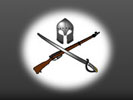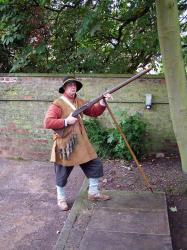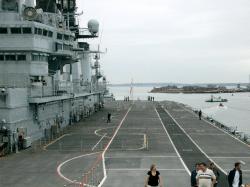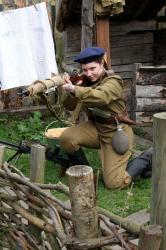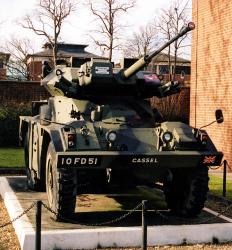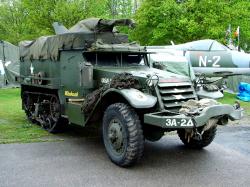Translate this Page
Recent reviews :
- The Men of Wellington's Light Division (Gareth Glover and Robert Burnham)
- Blood, Guts and Gore. (John Gordon Smith )
- Armoured Warfare in the British Army 1939-1945 (Dick Taylor)
- Battle Understanding Conflict Hastings to Helmand (Graeme Callister & Rachael Whitbread)
- Eyewitness at Dieppe (Ross Reyburn)
- Echoes From Dawn Skies - Early Aviators: A Lost Manuscript Rediscovered (Frederick Warren Merriam)
- The Decline of Empires in South Asia (Heather A Campbell)
- The Final Curtain Burma 1941-1945 (Jeremy Archer)
- The Harwich Striking Force (Steve R Dunn)
- Churchill's Arctic Convoys (William Smith)
Book reviews for - World War 1
-
Italian Battleships Conte di Cavour and Duilio Classes 1911-1956
Ermino Bagnasco and Augusto de Toro
This is the story of the ships of two classes of Italian battleships, Conte di Cavour and Duilio Classes from their beginnings to their ends. The design decisions which brought them into being, the building processes, their wartime activities and the finale of the breakers yards are all here. The period covered is from 1911 to 1956. The book is packed with information which could only have been gathered and presented through painstaking research by the two authors. The text is clear and lucid and is supported by an incredible number of photographs of all aspects of the ships’ existence. Even the various camouflage designs and colours are illustrated. There cannot be much to be known about these vessels, as individual ships that is not in this book.
It is a pleasure to read and we warmly recommend it to a wide range of readers.
Seaforth Publishing, 2021
-
The K Boats
Don Everitt
If you are at all interested in the development of submarines or simply want to read about the blinkered approach of senior commanders to evidence of failure, here is a book for you. It might however be difficult to obtain a copy published as it was in 1963 by George Harrap and Co. Ltd. The original conception of a fleet submarine required high surface speed at that time, 1915, the only power source available was steam power. All problems stemmed from this fact. The boats had to be big, funnels had to be used, diving became slow and complex. None of the original performance criteria were met but naval staff continued to build ,direct operations in spite of numerous sinkings and near disasters.
The book is incredibly well researched with the author, Don Everitt, being in correspondence with many of the people closely involved. There are also some very good photographs of many of the craft. The narrative flows in a most readable style.
We commend it to you.
George G. Harrap & Co. Ltd., 1963
-
The Badges of Kitchener's Army
David Bilton
This book has the wow! factor. Packed full of information, a real reference gem.
In its 351 pages, the badges of sixty nine infantry regiments are covered with explanatory text and over a thousand illustrations. Also, oft neglected, Divisional and Brigade badges are included. Every one of the illustrations of badges and of men wearing them is an original photograph. The text, often as an annotation to a photograph, is fully informative and where the author doesn’t have the necessary knowledge he says so. I rather fear that, after his thirty years research, if David Bilton doesn’t know then it is unlikely that the knowledge is anywhere to be found.
This book will be of interest to many people from the person with a passing interest to the most knowledgeable collector. I defy anyone who picks it up intending to look at one regiment to put it down with out looking at a few more.
We highly recommend this invaluable research tool.
Pen & Sword Military, 2018
-
How the Navy Won the War
Jim Ring
To the general reader the idea of the Navy winning the First World war may appear odd. ‘Everyone’ knows of the mighty battles the army fought and that the Navy had only one major engagement. Reading this book will change their minds. As the author points out in the introduction ‘This story, by no means unfamiliar to naval and military historians, is one which has never captured the public’s imagination…’
Throughout this book the interesting premise is well developed. Jim Ring has done his research well and could have presented a dry academic exercise but the story flows from event to event at a pace to reflect the developing situations in a gripping and most readable way. The land story, the sea story, the political and the military are intertwined and have a cohesion which makes for easy understanding.
The book is not large, 232 pages, including a group of thirteen photographs. The content is, therefore, an overview with very little detail but the extensive seven page bibliography points the reader towards an extension of any of the events and persons they wish to follow up.
This is a book should capture the public’s attention and imagination, as the author intended, and we thoroughly recommend it. After reading it the First World war will never appear the same again.
Seaforth Publishing, 2018
-
Battle on the Seven Seas
Gary Staff
Here we have a good read, a narrative of the German cruiser battles 1914-1918, with lots of quotes from the people who were there. Battle locations are world wide from the Pacific to the Black Sea with both global strategy and engagement tactics described. The account of the battle of Jutland, Skagerrak to the Germans, with its focus on the cruisers, is refreshingly different to the usual version of events. Also there are some excellent photographs of the warships including some uncommon ones showing battle damage.
Three things stop this book from being excellent. The first is my very regular complaint about maps. There is an absence of scales on most of the many maps [28 maps only 2 with scales], and a few with too much information which is confusing. However, the six maps which cover the phases of the battle of Jutland are most helpful.
The second is an absence of any detailed description of the ships involved, and I had to turn to my Jane’s Fighting ships of WW1 to get a real understanding of the comparative worth of opposing vessels. A drawing and a specification of each class of cruiser would have been of great help to the general reader. And lastly a glossary of technical terms and abbreviations used, including translations of the many German terms, would have been more than helpful. The addition of these things to the 232 pages would not have made the book unmanageable.
In spite of those criticisms I still think this is a book well worth reading by anyone with an interest in World War One at sea.
Pen & Sword MARITIME, 2018
-
Messines 1917
Craig Deayton
Craig Deaton tells the story of the Anzacs attack on the Messines Ridge on the 7th June 1917. An attack which began with the greatest explosion of mines ever executed, continued with the rapid achievement of the first objective and then dissolved into a chaotic bloodbath gaining the final objectives. The story moves seamlessly between the micro to the macro within a few paragraphs without any confusion to the reader. We see the role and hear the voice of the General and the private.
This is a super read for anyone wanting to gain insight into the very essence of the First World war. There is brilliant staff work contrasting with the appalling blunders by senior officers. There are expectations of command which are beyond reason and there are achievements beyond possible. There is the heroism, occasionally amounting to suicidal actions, among men and especially among front line officers. There is compassion and savagery, carrying a wounded comrade back to safety under fire contrasting with the shooting of enemy soldiers who had surrendered.
There are very many photographs scattered throughout the text and contemporary maps at the appropriate points. Here is my usual complaint about most modern books, there are not sufficient maps with scales and keys. A picture is worth a thousand words and so is a good map.
What Craig Deayton cannot be faulted on are the appendices, the endnotes, the bibliography and the index all of which are of great help to the reader and point to the massive amount of research which has gone into the writing of this book.
Clash-of-Steel thoroughly recommends this book.
Pen & Sword Military. Pen & Sword \Books \Ltd., 2018
-
Securing the Narrow |Seas. The Dover Patrol 1914-1918
Steve R. Dunn
There is quite a story about efforts in World War One to control that narrow strip of sea which separates Britain from the continent. If not the whole story this book gives a very good impression of covering most of it. From the lowest ranks with 'ordinary men doing extraordinary things' to the damaging petty jealousies and rivalries at the top of the Admiralty. It covers the failures in understanding that sea warfare was changing, failure in ships not really designed to fulfill the tasks asked of them. It illuminates the superhuman efforts and devotion to duty shown by the middle and lower ranks when they were asked to compensate for strategic inadequacies. The ships ranged from drifters taken in from the fishing fleet to monitors fitted with 15 inch guns. The tasks ranged from patrolling the anti-submarine boom, to bombarding enemy troops in Flanders, to the attacks on Zeebrugge and Ostend. Personal stories abound as in the sinking of H M S Sanda taking with it the oldest serving officer at sixty-seven and a signal boy of fifteen. In another incident on the death of a sailor he was found to have two wives, a problem for the pay-office!
The book is well written, thoroughly researched, well illustrated. While reading this book I occasional put it down because I was enjoying it so much I didn't want it end. It really is that good.
Seaforth Publishing. Pen and Sword Books Ltd., 2017
-
The Irish Guards in the Great War
Rudyard Kipling
Not a lot of military history books could be better than the war diaries and personal correspondence of the First battalion of the Irish Guards written up by Rudyard Kipling with style. Although narrowly focused on this relatively small group of men it is essentially about every soldiers war. This is because it gets down to the minutiae of single men, section and platoon actions. The sweep of strategy and the grand plans are for other places. The text is well supported with illustrations and maps.
I thoroughly recommend this book to anyone seeking a full understanding of the Great war.
Spellmount Ltd., 1997
-
Naval Battles of the First World War
Bennett, Geoffrey
Penguin, 2001
-
Verdun
Blond, Georges
Originally published in French 1961, this book is full of Gallic passion, and conveys the horror, squallor and suffering as well as the heroic efforts made to protect this vital sector in 1916. Blond is to be recommended if you want to read a Frenchman who believes in his people.
Mayflower-Del paperback, 1967
-
The Last Crusade -The Palestine Campaign in World War 1
Bruce, Anthony
A very even handed account of a campaign that has been largely ignored yet contains many of the elements that have bedevilled military operations in the Middle East over the last forty years. The Arab Revolt and T.E.Lawrence are set in the context of war between two major powers. It also brings to life the rank and file who bore the brunt of hostilities and the climate. Inter service cooperation, in its infancy then, was a considerable factor from the battle of Gaza to the conclusion of the campaign, from the war in the air and Naval support along the coast of the Levant. Easy and absorbing reading that would have profited from a few more maps.
John Murray, 2002
-
The A.I.F. in Sinai & Palestine, The Official History of Australia in the War 1914-1918, Vol VII
Gullett, Henry S
Sydney, 1944
-
Gunfire on Nyasa
The Nyasaland Journal, Vol X No 2
Dr Sanderson
The Nyasaland Society, July 1957
-
Gunfire on Nyasa
Sandson, G.M.
Nyasaland Journal Vol X No.2, July 1957
